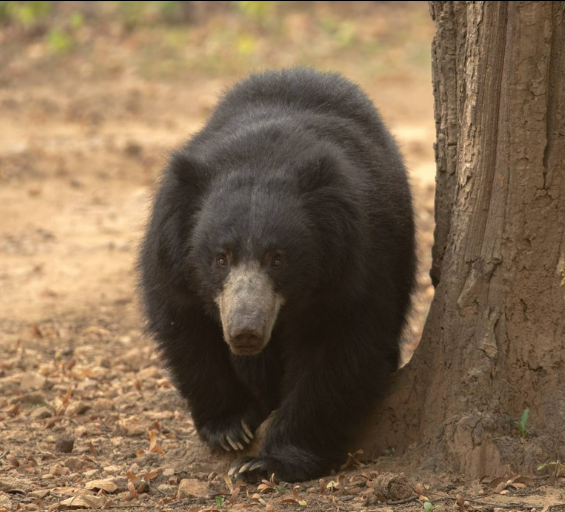Sloth bears (Melursus ursinus) are a distinctive and fascinating species that inhabit the forests of South Asia. Known for their shaggy coats, unique feeding habits, and distinctively long claws, sloth bears are a testament to the wonders of biodiversity. However, these charismatic creatures are facing a range of threats that are putting their survival at risk. From habitat loss to poaching, the challenges that the species face are complex and interconnected. In this article, we will delve into the various threats confronting baloo, supported by evidence, examples, and statistics.

Habitat Loss: A Growing Predicament
One of the most significant threats faced by sloth bears is the loss of their natural habitat. Rapid urbanization, agricultural expansion, and deforestation have led to the degradation and fragmentation of forests across South Asia. As forests are cleared for human settlement and development, the species find themselves with shrinking and isolated habitats.
According to the International Union for Conservation of Nature (IUCN), sloth bears’ preferred habitats are dry forests, grasslands, and tropical deciduous forests. Unfortunately, these habitats are under immense pressure due to human activities. India, home to a significant sloth bear population, has experienced a rapid loss of forest cover. Moreover, the State of Forest Report 2019 highlights that between 2007 and 2019, India lost over 3 million hectares of forest cover.
A study published in the journal “Biological Conservation” estimated that sloth bears have already lost 16.3% of their potential habitat due to deforestation and habitat conversion.
Human-Wildlife Conflict: Clash of Needs
As humans expand into the species’ territories, conflicts between people and bears become inevitable. Unfortunately, sloth bears are often labeled as nuisance animals due to their foraging habits that sometimes bring them into proximity with human settlements.
Sloth bears are opportunistic feeders, and they often raid crops and orchards, leading to economic losses for local communities. Consequently, this behavior puts them on a collision course with farmers and residents, leading to negative interactions. Specifically, a study published in “PLOS ONE” estimated that nearly 40% of villages surrounding protected areas in India reported sloth bear conflicts. This highlights the pressing nature of the human-wildlife conflict.
Poaching and Wildlife Trafficking: A Lucrative Threat
Sloth bears are also at risk due to poaching and the illegal wildlife trade. Different body parts of sloth bears are in demand for traditional medicine and decorative purposes. For example. the gallbladders and other body parts of sloth bears are sought after in traditional Asian medicine, despite a lack of scientific evidence supporting their efficacy. As a result, this has driven poaching and illegal trade.
In 2018, the Wildlife Crime Control Bureau in India seized 56 sloth bear claws and 12 bear gallbladders from poachers. Unfortunately, the demand for these body parts continues to put pressure on sloth bear populations. Meanwhile TRAFFIC, a wildlife trade monitoring network, reported that between 2009 and 2018, at least 57 sloth bears were seized from illegal wildlife trade operations in India.
Climate Change: An Unforeseen Challenge for Sloth Bears
While not as immediate as other threats, climate change is also impacting sloth bears and their habitats. Specifically, climate change leads to shifts in vegetation, altering the availability of food for sloth bears. Changes in rainfall patterns and temperature can affect the distribution of plants and insects that constitute their diet.
A study published in “Climatic Change” projected that climate change could reduce the availability of certain fruits, ants, and termites that sloth bears rely on for sustenance. This could potentially lead to changes in their behavior and distribution. Additionally, the same study estimated that by 2070, the habitat suitability for the sloth bear could decrease by 23-35% due to climate change impacts.
The Way forward for Sloth Bears
The Sloth Bear is a testament to the incredible diversity of life on our planet. However, their survival is threatened by a range of complex and interconnected challenges, from habitat loss to poaching and human-wildlife conflict. Nonetheless, through collaborative action, we can secure a future where the species continue to roam the forests of South Asia, captivating our hearts and inspiring us to protect the natural world.
Help us Help Them! Think Wildlife Foundation is a non profit organization with various conservation initiatives. Our most prominent campaign is our Caring for Pari intiative. Pari is a rehabilitated elephant at the Wildlife SoS Hospital. 25% of the profits from our store are donated to the elephant hospital for Pari. Other than buying our wonderful merchandise, you could donate directly to our Caring For Pari fundraiser.
